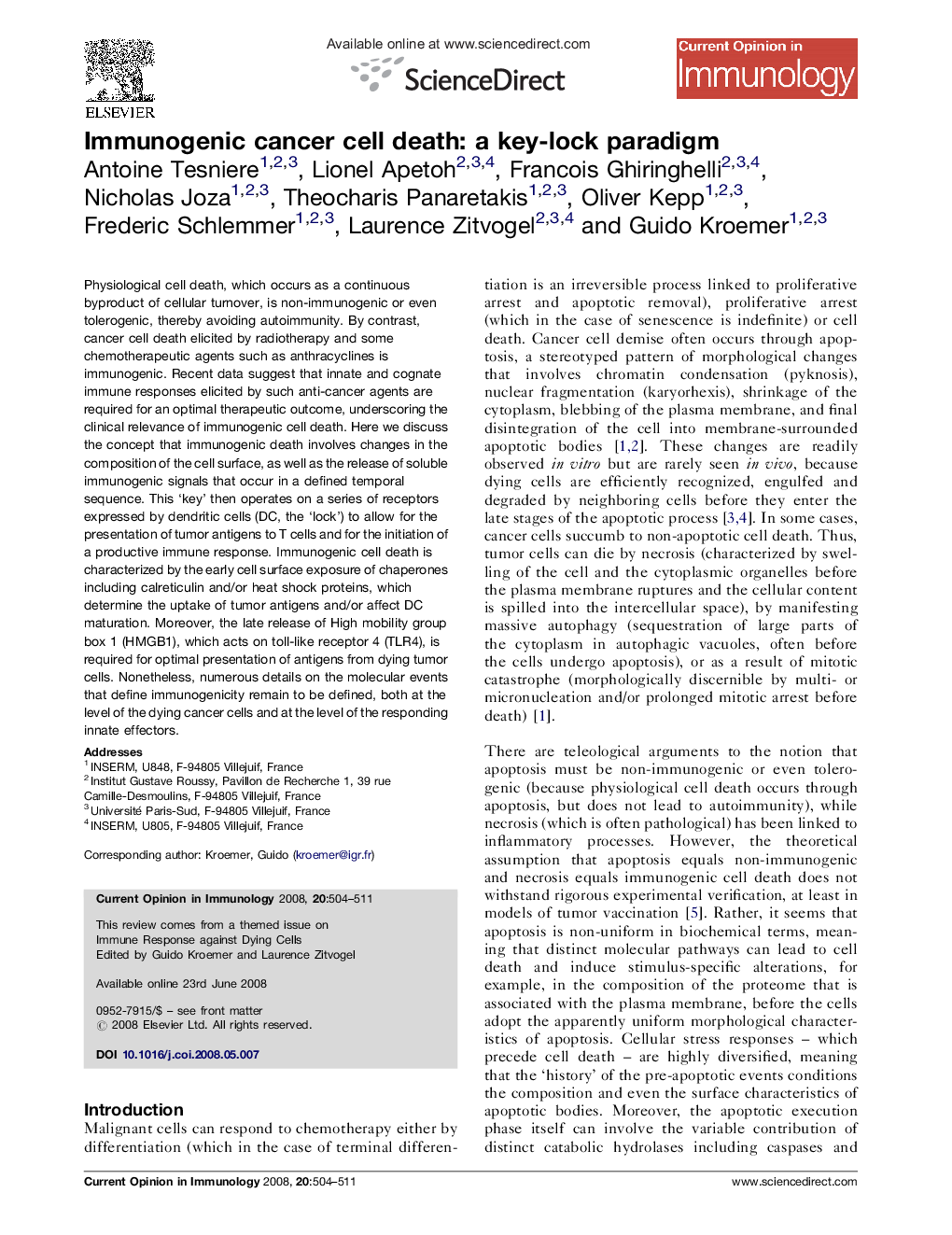| کد مقاله | کد نشریه | سال انتشار | مقاله انگلیسی | نسخه تمام متن |
|---|---|---|---|---|
| 3346366 | 1215783 | 2008 | 8 صفحه PDF | دانلود رایگان |

Physiological cell death, which occurs as a continuous byproduct of cellular turnover, is non-immunogenic or even tolerogenic, thereby avoiding autoimmunity. By contrast, cancer cell death elicited by radiotherapy and some chemotherapeutic agents such as anthracyclines is immunogenic. Recent data suggest that innate and cognate immune responses elicited by such anti-cancer agents are required for an optimal therapeutic outcome, underscoring the clinical relevance of immunogenic cell death. Here we discuss the concept that immunogenic death involves changes in the composition of the cell surface, as well as the release of soluble immunogenic signals that occur in a defined temporal sequence. This ‘key’ then operates on a series of receptors expressed by dendritic cells (DC, the ‘lock’) to allow for the presentation of tumor antigens to T cells and for the initiation of a productive immune response. Immunogenic cell death is characterized by the early cell surface exposure of chaperones including calreticulin and/or heat shock proteins, which determine the uptake of tumor antigens and/or affect DC maturation. Moreover, the late release of High mobility group box 1 (HMGB1), which acts on toll-like receptor 4 (TLR4), is required for optimal presentation of antigens from dying tumor cells. Nonetheless, numerous details on the molecular events that define immunogenicity remain to be defined, both at the level of the dying cancer cells and at the level of the responding innate effectors.
Journal: Current Opinion in Immunology - Volume 20, Issue 5, October 2008, Pages 504–511